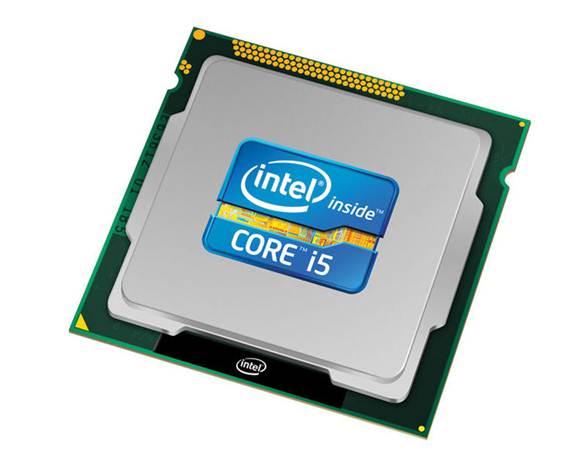Config
So, in light of all this, it can be
difficult to know how different situations, and when you throw in an operating
system that doesn’t always have the most reliable driver sets, things can get
even more confusing. We’ve taken a triumvirate of different processors to see
how they cope with the vagaries of Linux:
·
AMD APU A8-3850 3.0GHz (cores: 4, cache: 4x1MB level 2)
$118.5
·
AMD Phenom II X6 1100T 3300Mhz (cores: 6, cache: 6x
512KB level 2,6MB level 3) $150
·
Intel i5-2500K 3.6 GHz (cores: 4, cache: 2x 32KB level
1,256KB level 2,6MB level 3) $243

AMD
APU A8-3850 3.0GHz
We’re running all of them at their native
clock speeds. You can always overclock later through the BIOS, but for now we
need to make sure the setup is as stable as we can get. Later on when you’re
full of Linux love but craving a little more speed, you can dive into the BIOS
and start messing around with clock speeds and multipliers as much as you like.
We can see that the Intel processor
out-performed the AMD ones in almost every area. This isn’t surprising, as it
costs twice as much as the cheapest one, but also shows Intel’s Linux drivers
are strong enough to keep the same large gap it manages with its processing
tech through Windows. In a few areas – the Apache static page test for example
it performed twice as well. The Sandy Bridge CPU almost always outperformed the
Phenom II X6 despite having two fewer cores and only slightly faster clock
speed. The only significant exceptions to this were the John the Ripper
password cracking test and some of the GraphicsMagic tests. These are highly
parallel benchmarks, which take full advantage of the higher thread-count in
the Phenom II X6.

AMD
Phenom II X6 1100T 3300Mhz
Not all of the speed differences here are
down to the CPU though. The different boards have different hardware on them,
despite both running similar technologies. The differences in the way the
storage drives operated were pronounced. This resulted in dramatically faster
read speeds for files under 2GB, though there was no difference in files above
this size. Write speeds were roughly even across the different setups too. The
choice of CPUs available today is probably more complex than it has ever been.
There has been growth in simpler, low-power CPUs, complex processors, highly
parallelized graphics chips and clusters. More than ever, the question isn’t
“which is the best processor?”, but “What is the right solution for the task?”
Answering this question requires knowledge of both what chips are on the
market, what they cost and how these chips perform at different tasks.

Intel
i5-2500K 3.6 GHz
The high-end Intel cores are the most
powerful for everyday tasks, but speed comes at a price. The extra cores in the
X6 proved enough to match, and sometimes outperform the i5 in the GraphicsMagic
benchmarks, which simulate image manipulation, while leaving a significant
chunk of cash in your wallet. Unless you use KDE with every widget and effect
though, the X4 is more than capable of performing most day-to-day computing
tasks.
How
multiple cores affect performance?
We can see how adjusting the number of
cores affects performance by using VirtualBox to simulate different CPUs. We
can allocate a number of cores from the host to a guest, and therefore see how
the system will perform with an arbitrary number of cores. Here you can see how
the system performed in the benchmarks with between one and three cores.
The performance difference from increasing
the number of cores varied depending on the task. In several cases, increasing
the number of cores slowed the execution due to the overheads of scheduling
processes across several cores. In other cases we saw a roughly linear
improvement as we increased the available processing units. It’s worth noting
that we performed these tests sequentially. Had we performed more than one at a
time, we’d expect the results to favour the multi-core approach more strongly.
When selecting a CPU, it’s worth
considering how many intensive tasks you’ll be running at once. For server use,
check whether the services you use can take advantage of the number of cores in
the CPUs you’re considering. Tasks that perform well on multi-core machines often
do even better on graphics cards using CUDA or OpenCL.
Computational
performance
SciMark v2
Iterations per second: higher is better
Monte Carlo
·
1 cores: 260
·
2 cores: 240
·
3 cores:250
Spare Matrix Multiply
·
1 cores: 480
·
2 cores: 460
·
3 cores: 430
Computational
performance
Jack the Ripper
Checks per second (millions): higher is
better
·
1 cores: 1.9
·
2 cores: 3
·
3 cores: 4.4
64-bit
vs. 32-bit processors
Even if you have a 64-bit processor, you
may not be taking advantage of the 64-bit features of the CPU. To keep
backwards compatibility, 64-bit processors were designed to run 32-bit code.
Here, we’ve run the set of benchmarks using a 64-bit processor running both 32-and
64-bit versions of Linux to see how this affects performance. 64-bit generally
runs faster, but for general day-to-day computing, you’re unlikely to notice
much difference. If you’re crunching numbers though, the longer word length
will speed things up.
I/O
performance
IoZone
KB/S: higher is better
Disk write
·
32-Bit: 0.3
·
64-bit: 0.3
Disk read:
·
32-Bit: 2.4
·
64-bit: 3.6
Computational performance
John the Ripper
·
Index score: check per second (millions)
·
32-Bit: 2
·
64-bit: 4.5
Computational
performance
SciMark v2: MFLOPS: higher is better
Monte Carlo
·
32-Bit: 130
·
64-bit: 250
Spare Matrix Multiply
·
32-Bit: 560
·
64-bit: 590